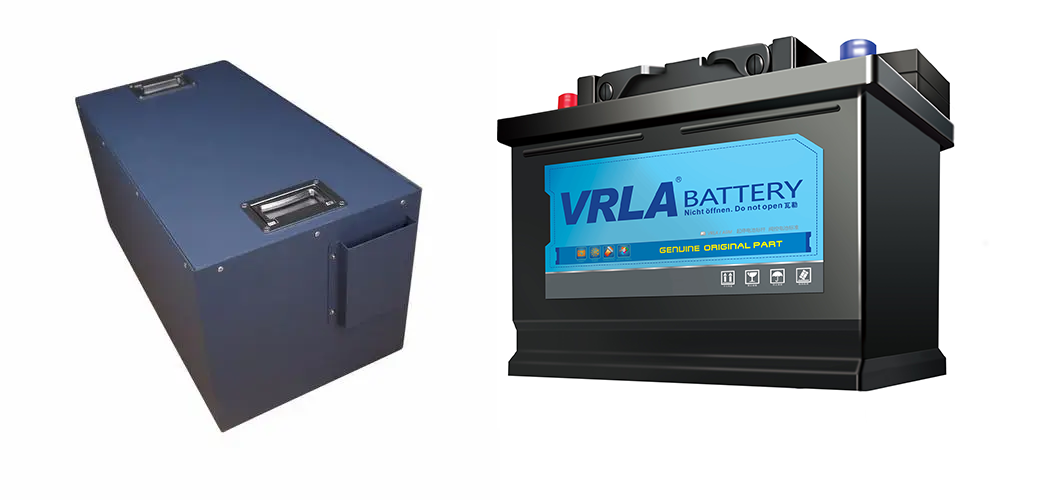When choosing a battery for your project—whether it’s for solar power storage, electric vehicles, or backup systems—it’s important to understand the differences between LiFePO4 (Lithium Iron Phosphate) and AGM (Absorbent Glass Mat) batteries. Both are reliable energy storage solutions, but they differ significantly in performance, lifespan, safety, and cost-efficiency.
In this article, we’ll break down each type, compare them across key performance metrics, and explain why LiFePO4 batteries often come out on top for most modern applications.
What is a LiFePO4 Battery?
A LiFePO4 battery, short for Lithium Iron Phosphate, is a type of lithium-ion battery known for its exceptional stability, long life, and safety. Compared to traditional lithium-ion chemistries, LiFePO4 cells use iron phosphate as the cathode material, which significantly reduces thermal runaway risks.
Key advantages of LiFePO4 batteries include:
- Higher energy density for compact designs
- Faster charging capabilities
- Low self-discharge rates
- Long cycle life—often exceeding 3,000 to 5,000 cycles
These qualities make LiFePO4 batteries ideal for demanding applications like solar energy systems, RVs, marine power, and electric vehicles.
What is an AGM Battery?
An AGM battery (Absorbent Glass Mat) is a type of sealed lead-acid battery that uses fiberglass mats to absorb the electrolyte. This design prevents leaks and allows for maintenance-free operation. AGM batteries are widely used in automotive, marine, and UPS backup systems due to their reliability and affordability.
However, AGM batteries have notable limitations:
- Heavier and bulkier design
- Lower energy density
- Limited cycle life (typically 300–500 cycles)
- Slower charging and lower efficiency
While AGM batteries are cost-effective upfront, they tend to fall short in performance and longevity compared to LiFePO4 options.
Charging Efficiency: LiFePO4 Leads the Way
Charging efficiency is one of the biggest differences between these two battery types.
LiFePO4 batteries can charge up to 4–5 times faster than AGM batteries and can handle deep discharge cycles without performance loss. Their charge retention rate is also superior, often exceeding 95% efficiency, compared to 70–80% for AGM batteries.
This makes LiFePO4 batteries perfect for applications requiring quick recharges and continuous power availability, such as solar energy storage and off-grid systems.
Cycle Life: Longer-Lasting Power with LiFePO4
Battery lifespan is measured in charge/discharge cycles.
- LiFePO4 batteries: 2,000–5,000+ cycles
- AGM batteries: 300–500 cycles
This means a LiFePO4 battery can last up to 10 times longer than an AGM battery under similar usage conditions. Although LiFePO4 batteries cost more upfront, their extended lifespan makes them far more cost-effective over time, especially for high-use applications.
Depth of Discharge (DoD): More Usable Energy
The depth of discharge indicates how much of a battery’s capacity can be safely used before recharging.
- LiFePO4 batteries can safely discharge up to 80–100% of their capacity.
- AGM batteries should only be discharged up to 50% to prevent damage.
This means that with the same capacity rating, a LiFePO4 battery delivers nearly twice the usable energy, maximizing system efficiency and reducing the need for frequent recharges.
Weight and Size: Compact and Lightweight Advantage
LiFePO4 batteries are significantly lighter and more compact than AGM batteries.
For example, a 100Ah LiFePO4 battery typically weighs around 25–30 lbs, while an AGM battery of the same capacity can weigh 60–70 lbs.
This lightweight design makes LiFePO4 ideal for portable and mobile applications, such as electric vehicles, boats, and camper vans, where every pound matters.
Safety and Stability: LiFePO4 Offers Superior Protection
Safety is a critical factor in battery selection. LiFePO4 batteries are among the safest lithium chemistries available. They are:
- Highly stable under high temperatures
- Resistant to overcharging and thermal runaway
- Non-toxic and environmentally friendly
In contrast, AGM batteries can emit gases under stress, and if mishandled, may overheat. With integrated Battery Management Systems (BMS), LiFePO4 batteries ensure real-time protection against overvoltage, short circuits, and temperature extremes.
Cost Comparison: Upfront vs Long-Term Value
At first glance, AGM batteries are cheaper, but they degrade faster and require replacements more often.
LiFePO4 batteries have a higher initial cost but deliver superior return on investment through:
- Longer lifespan
- Reduced maintenance
- Higher energy efficiency
Over a 10-year period, LiFePO4 batteries often prove to be 50–70% more cost-effective than AGM batteries, especially for renewable energy systems or off-grid setups.
Applications of LiFePO4 Batteries
Thanks to their high efficiency, safety, and durability, LiFePO4 batteries are becoming the go-to power source for a wide range of uses:
- Electric Vehicles (EVs) – Lightweight and long-lasting power for modern transport.
- Solar Energy Storage – Efficiently stores renewable energy with minimal losses.
- Marine and RV Systems – Compact and vibration-resistant for harsh environments.
- Backup Power Systems – Reliable long-term energy supply for homes or businesses.
- Portable Devices – High-performance batteries for tools and electronics.
Conclusion: Why LiFePO4 is the Better Choice
In the battle between LiFePO4 vs AGM batteries, the winner is clear.
LiFePO4 batteries outperform AGM in every major category—charging speed, cycle life, safety, weight, and long-term cost efficiency. While the initial investment may be higher, the long-term benefits make them the smarter, more sustainable choice for most modern energy applications.
If you’re seeking reliable, long-lasting, and efficient power storage, a LiFePO4 battery is undoubtedly the way to go.
FAQs About LiFePO4 vs AGM Batteries
1. Can I replace my AGM battery with a LiFePO4 battery?
Yes, in most cases you can. Just make sure the charging system is compatible with LiFePO4’s voltage and charging profile.
2. Do LiFePO4 batteries need a special charger?
Yes, they require a charger designed for lithium chemistry to prevent overcharging or damage.
3. How long do LiFePO4 batteries last?
Typically 2,000–5,000+ cycles, translating to 8–15 years of service life depending on usage.
4. Are LiFePO4 batteries safe?
Absolutely. Their stable chemistry and built-in BMS make them one of the safest lithium options available.
5. How should I dispose of an old LiFePO4 battery?
Always recycle through an authorized battery recycling center or follow local hazardous waste regulations.
